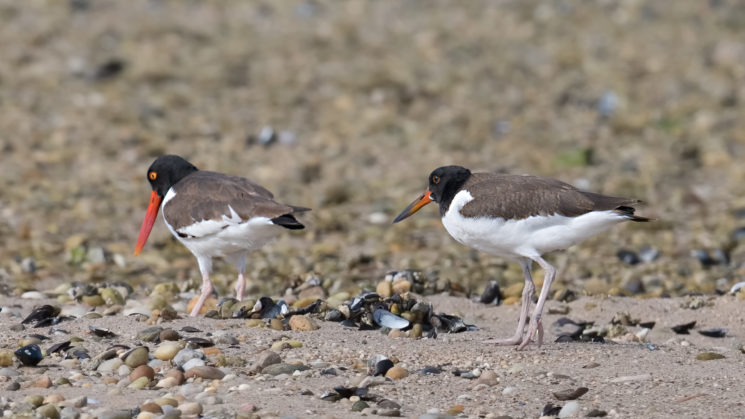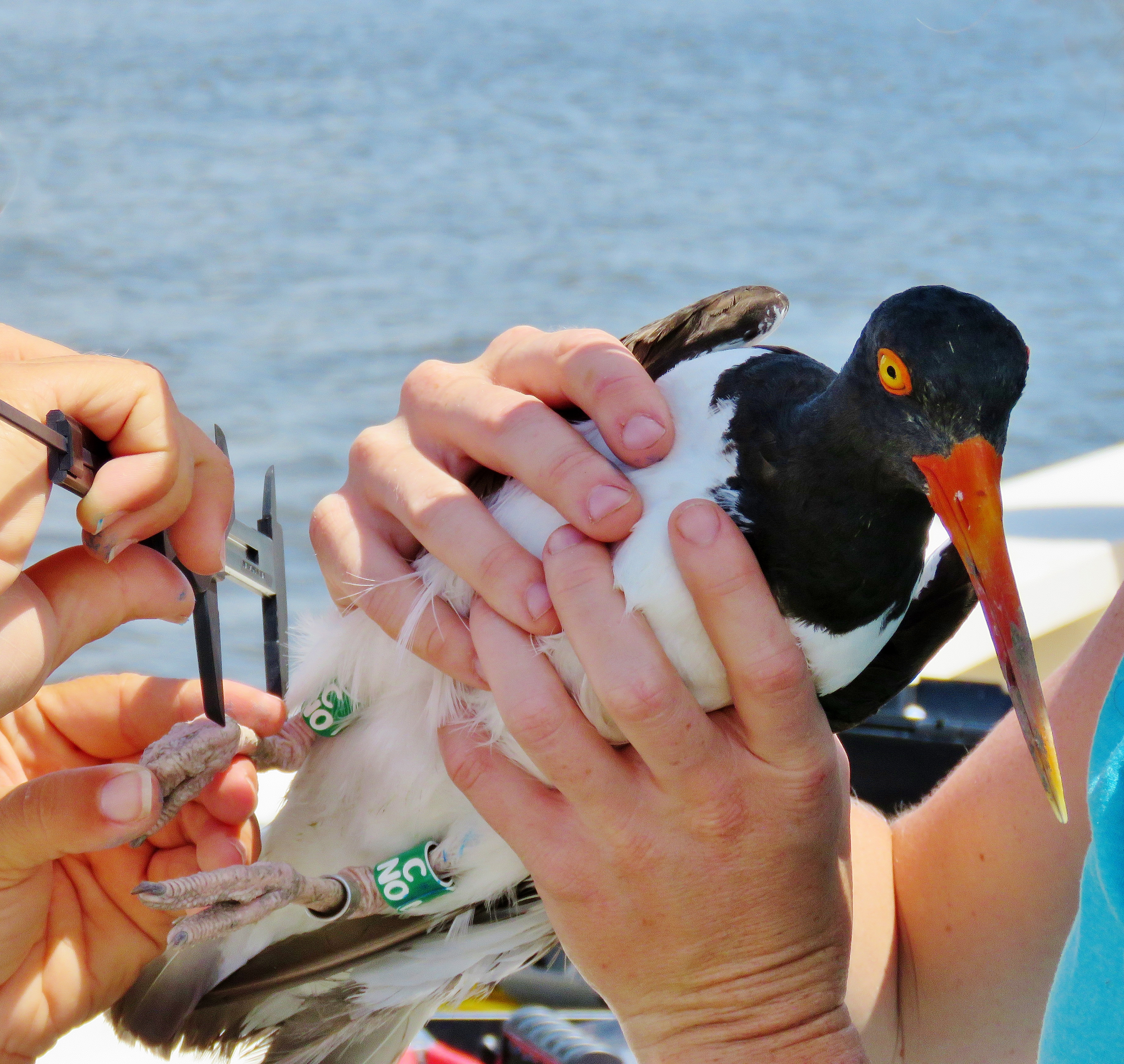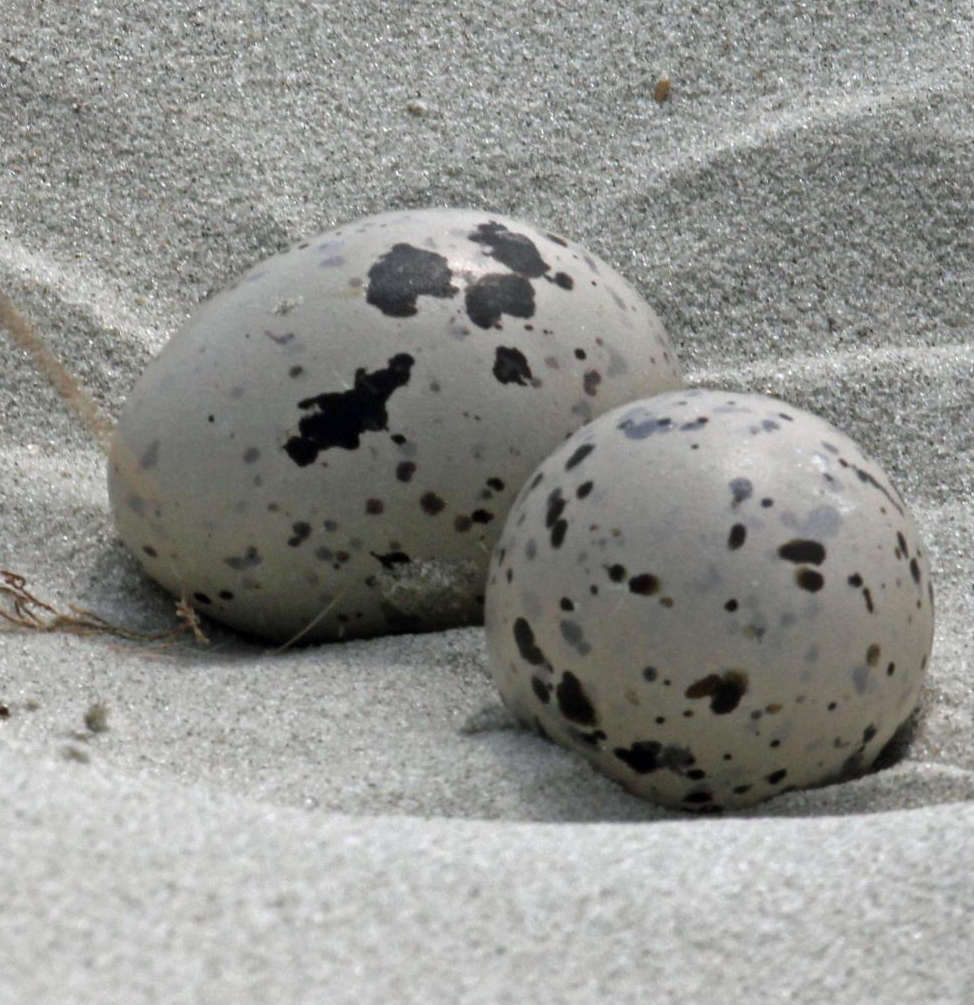
Above: American oystercatchers.
Due to continuing coastal threats to the American oystercatcher — and because the bird’s small population had been in decline until recently — the North Carolina Wildlife Resources Commission classified the species of “greatest conservation need.” To better understand if the oystercatcher population is imperiled, a North Carolina Sea Grant study looked at a key indicator of species stability: the ratio of males to females.

Shilo K. Felton: “Through capture and recapture analyses we also found that sex, hatch site, and breeding site all influenced survival.”
“For a monogamous breeder like the oystercatcher, the number of available male-female pairs is critical,” says Shilo K. Felton, a recent doctoral graduate in fisheries, wildlife, and conservation biology from North Carolina State University. “Many models assume an even ratio of breeding males to females, but this assumption can lead to misleading projections of population growth or extinction.”
Natural resource managers rely on accurate estimates of population status and growth when making decisions to conserve species of interest. A previous study by Felton and her research partners suggested nearly stable oystercatcher populations in North Carolina, but prior research also has shown that the number of breeding pairs in certain protected areas decreased by almost 50 percent in the past decade.
“Skewed male-female ratios are common in avian species,” Felton says. “We wanted to know if North Carolina’s American oystercatcher population likewise had an uneven ratio. If so, the population wouldn’t be as stable as the previous study implied.”
Felton and Audubon North Carolina colleague Lindsay M. Addison combed through feather samples that Theodore R. Simon’s lab at NCSU had collected from over 600 oystercatchers during a 13-year period. In turn, a lab at the University of Porto in Portugal then sexed the samples.

Oystercatcher eggs on Sunset Beach, N.C.
The feather samples indicated even female-male ratios for both juveniles and breeding adults in all but one year.
“Through capture and recapture analyses we also found that sex, hatch site, and breeding site all influenced survival,” Felton says. “In addition, the effects of each varied with life stage.”
Overall, Felton and Addison say their results suggest oystercatchers may remain part of the state’s ecosystems for years to come, as long as the various habitats the species requires are available.
This study received a North Carolina Sea Grant minigrant.
Photo credits: oystercatcher pair, courtesy of RussImages under a CC BY SA 2.0 license; oystercatcher in hand, courtesy of Lindsay M. Addison; the nest, courtesy of Dick Daniels, under a CC BY-SA 3.0 license.